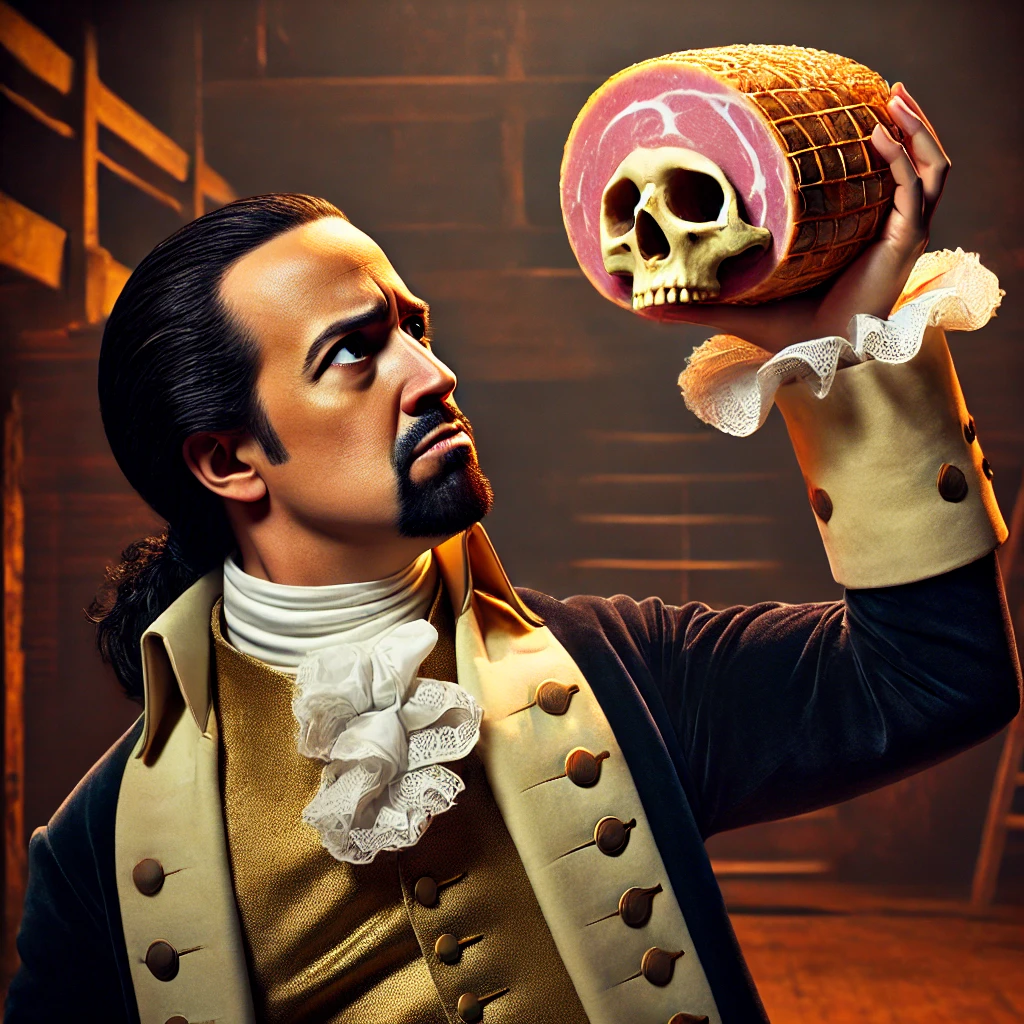
Hamilton at Ten: Time to Face the Hype
After Ten Years of Hamilton, We Can Admit the Truth
By Heywood Reynolds
It’s been ten years since Hamilton premiered off-Broadway at the Public Theater, and it’s time to admit something: it wasn’t that good. At the very least, we should concede that it does not live up to its immense hype.
I was fully prepared to love this play when I bought tickets for my wedding anniversary—at $500 a pop. I had read the reviews, heard the clips, and couldn’t escape the overwhelming praise. But when the day came, I was ready to leave by intermission. As the lights came up, my husband and I exchanged a look: Is this really the same play everyone is raving about?
As a standalone story, without the aid of a historical study guide, Hamilton is hard to follow. Even if you can keep up with the rapid-fire rap lyrics, the dense historical references and complex character relationships make it nearly as confusing as an opera sung in Italian. And I say this as a dedicated fan of hip-hop. Lin-Manuel Miranda and I are roughly the same age, and likely grew up listening to the same rap icons, which is probably why I instantly recognized the song Ten Duel Commandments as a direct lift from Biggie’s Ten Crack Commandments.
For me, the rap simply didn’t work. The musical’s attempt to blend historical narrative with hip-hop storytelling felt forced, like something a substitute teacher might use to make history “cool.” The ambitious effort was undermined by its own execution, and rather than making the subject matter feel more accessible, it came off as gimmicky.
Much of Hamilton’s acclaim centered around its racially diverse cast, which Miranda himself described as a way of making history feel “more immediate and more accessible.” While the casting was undeniably fresh and groundbreaking, it also introduced a significant contradiction. By placing actors of color in the roles of the Founding Fathers without addressing the realities of slavery, the production inadvertently creates a revisionist image of a post-racial utopia. The omission of enslaved people is less glaring with a diverse cast, but had the roles been racially accurate, the whitewashing of slavery’s presence would have been impossible to ignore.
Additionally, the production’s only white actor with a speaking role—King George—was portrayed as a mincing, effeminate caricature. I wasn’t personally offended, but it was an odd choice for a show that prides itself on cultural inclusivity. That said, You’ll Be Back, sung by the King George character, remains the best number in the entire production.
I understand that mine is a minority opinion. Hamilton is one of the most decorated and beloved musicals in history. I saw firsthand how deeply it affected its audience—the young man sitting next to me wept with joy, and the theater erupted into a lengthy standing ovation at the final curtain. “Didn’t you just love it?” an usher gushed as we exited. I didn’t, actually, but the play’s cultural momentum was so overwhelming that any dissent felt like heresy.
I will give Hamilton credit where it’s due. It reinvigorated Broadway, introduced a new generation to theater, and expanded the musical genre’s sonic landscape. For that, we can be grateful. But if you were among those who weren’t blown away, know this—you’re not alone.